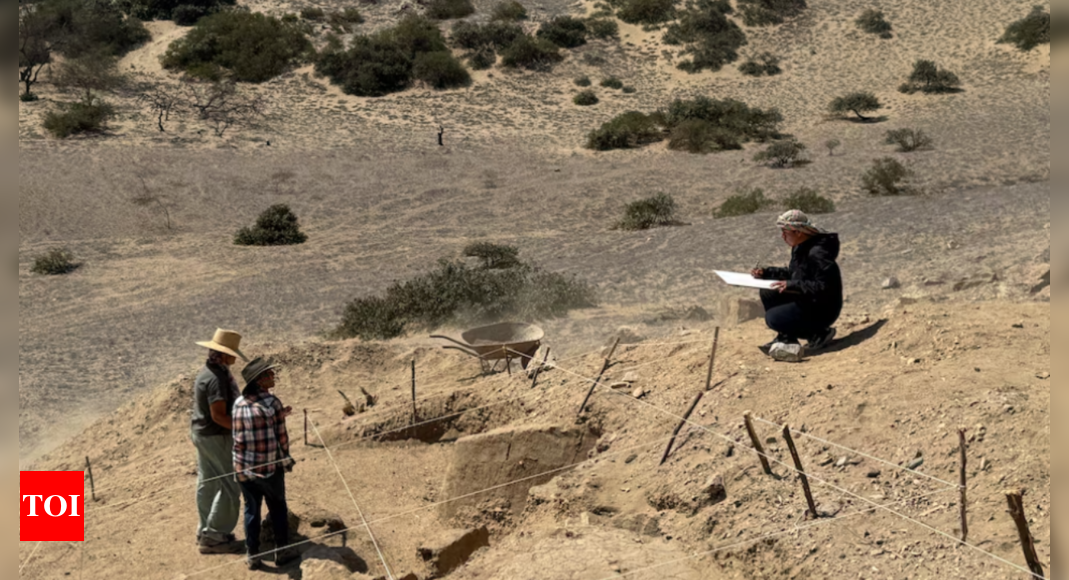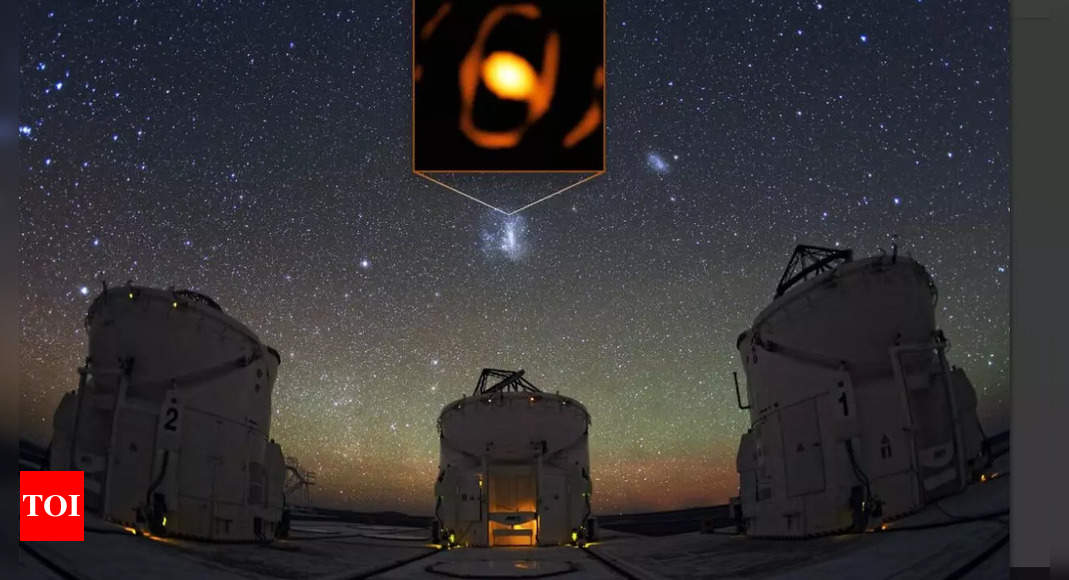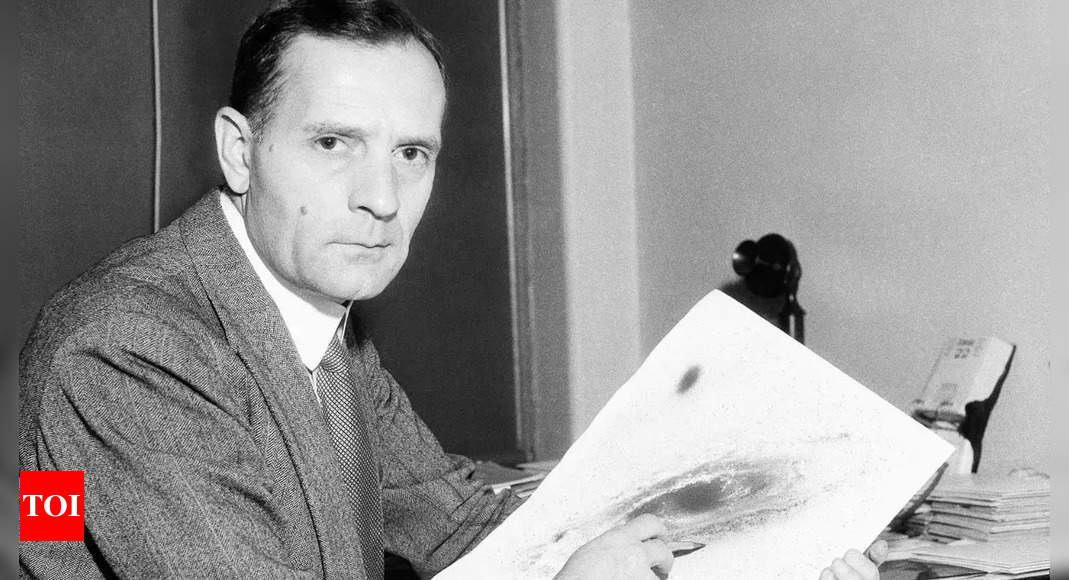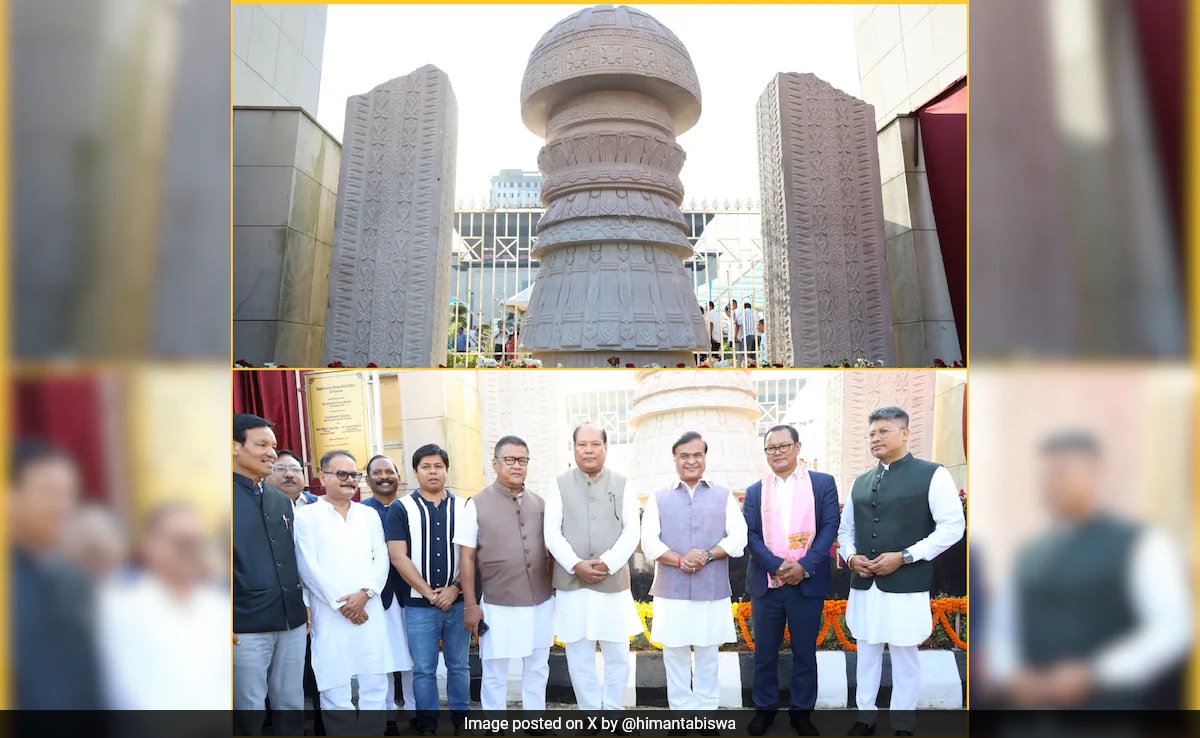
Archeologists have uncovered the remnants of what seems to be a ceremonial temple dating back 4,000 years, buried beneath a sand dune in Peru’s northern region of Lambayeque. The discovery, made in the desert district of Zana, also included human skeletal remains that may have served as offerings in religious ceremonies, according to a report by Reuters.
Luis Muro, the lead archeologist from Peru’s Pontifical Catholic University, said that while radio-carbon dating is still pending to confirm the exact age, the evidence points to the possibility of this temple being part of a religious tradition that existed along Peru’s northern coast during that era.
The team discovered the skeletal remains of three adults within the walls and foundations of the once multi-story structure, with one of the individuals potentially wrapped in linen or clothing and accompanied by offerings.
One of the temple walls features a high-relief drawing depicting a mythological being with a human body and a bird’s head, a design that predates the pre-Hispanic Chavin culture, which inhabited the central Peruvian coast for more than five centuries starting around 900 BC. In a nearby excavation, the team also found remains of what could have been another temple, this one associated with the later Moche culture that emerged approximately 1,400 years ago along the country’s northern coast.
Peru’s northern region is known for its ancient ceremonial complexes, such as the Sacred City of Caral, which dates back about 5,000 years. In contrast, the southern Ica region is famous for the Nazca lines, enigmatic geoglyphs etched into the desert more than 1,500 years ago.
Peru’s most iconic archaeological site remains the Incan citadel Machu Picchu, a World Heritage site constructed in the mid-15th century, nestled in the mountainous province of Cusco.
Luis Muro, the lead archeologist from Peru’s Pontifical Catholic University, said that while radio-carbon dating is still pending to confirm the exact age, the evidence points to the possibility of this temple being part of a religious tradition that existed along Peru’s northern coast during that era.
The team discovered the skeletal remains of three adults within the walls and foundations of the once multi-story structure, with one of the individuals potentially wrapped in linen or clothing and accompanied by offerings.
One of the temple walls features a high-relief drawing depicting a mythological being with a human body and a bird’s head, a design that predates the pre-Hispanic Chavin culture, which inhabited the central Peruvian coast for more than five centuries starting around 900 BC. In a nearby excavation, the team also found remains of what could have been another temple, this one associated with the later Moche culture that emerged approximately 1,400 years ago along the country’s northern coast.
Peru’s northern region is known for its ancient ceremonial complexes, such as the Sacred City of Caral, which dates back about 5,000 years. In contrast, the southern Ica region is famous for the Nazca lines, enigmatic geoglyphs etched into the desert more than 1,500 years ago.
Peru’s most iconic archaeological site remains the Incan citadel Machu Picchu, a World Heritage site constructed in the mid-15th century, nestled in the mountainous province of Cusco.







